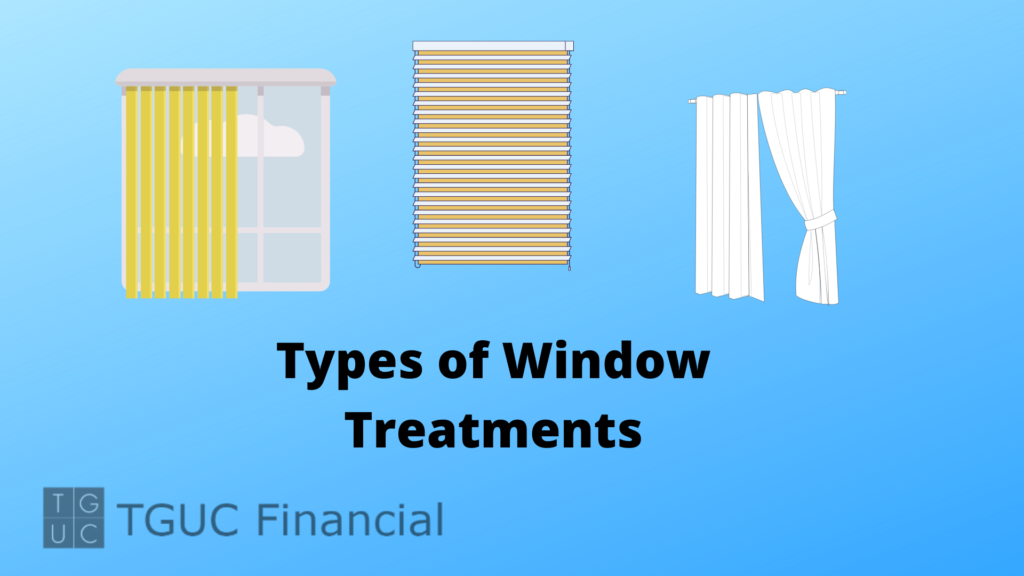Kitchen windows can serve as a decorative part of your kitchen. Regardless of your kitchen and the windows that you have in them, you need to make the best of your surroundings. A few perfect kitchen window treatments can go a long way in decor.
What’s amazing about window treatments is that they cost little to nothing. However, they can add a huge sense of warmth or sophistication to your house. And based on your tastes and preferences, you can do a lot with window treatments.
Your kitchen windows can be a natural point of beauty in your kitchen. They provide you with natural light as well as ventilation. Another amazing thing about kitchen windows is that they help make your house look more like home. Therefore, you must use them to help draw attention to these characteristics.
When it comes to kitchens, the beauty is in the details and that’s no different for kitchen windows. How you use your kitchen window treatments to bring out your home’s aesthetic and the theme is crucial.
Your windows can be unimpressive, but a few good window treatment ideas can bring out the best in your kitchen.
Also Read: Kitchen Design Ideas, A How to Guide

Choice of Material
There are several types of treatments, but before you can decide on that, there are other things you should look into. First and foremost, what aesthetic are you looking for?
Is it a contemporary kitchen? Or one of the several other types of aesthetic out there?
The main materials used in window treatments are:
- Synthetic material – such as plastic, faux wood, or vinyl.
- Organic material – which can include wood, bamboo, paper, as well as fabrics.
- Metal – a sturdy and durable option that comes in different gauges.
In general, you need to understand the theme of your kitchen so you can select the best material that suits it. It would be a good idea to take a picture of your kitchen window for reference when picking out your dressing.
Also Read: Best Color Scheme for Kitchen Cabinets

Types of Kitchen Window Treatments:
Picking out your window treatment depends largely on what type of decor and kitchen design you have. Here are the main types of window treatments for you to pick from:
Window Blinds
Possibly one of the more common kitchen window treatments, shades can come in many material types and sizes.
Although there is some confusion about the difference between shades and blinds, we’ll go over the difference between the two in this article.
Window blinds is generally an umbrella term to describe a type of window covering. Window blinds usually have louvers made out of different materials such as plastic, wood, fabric, or metal. These may be operated with a cord that can help lower them or fan them out, though there are also cordless models.
People describe blinds and shades synonymously, but the key difference is blinds have louvers while shades do not. Also, blinds have the most variable light control as the louvers can be opened, tilted, and also closed.
With window blinds, the louvers allow people to see through the window without lifting the window covering. However, this means the view is slightly obstructed unless you lift the blinds altogether.
Here are some types of blinds you can use as kitchen window treatments:
- Venetian Blinds: These are the most common types of blinds. They have horizontal louvers that can be raised with the help of a string, cloth, or button mechanism. These have a basic look and feel to them.
- Mini Blinds: They are similar to Venetian blinds but have smaller louvers, and can look a bit more elegant.
- Micro Blinds: These even smaller versions of mini blinds can look very smart and compact.
- Vertical Blinds: Though traditionally used on patios or sliding doors, these blinds have an elegant look about them.
Window Shades
When people refer to window shades specifically, they refer to a type of window covering that is one single piece. This piece can be made from various materials, however, they always roll up, stack, or fold.
You can roll up shades using a string or cord. They can be rolled halfway up, or up and the view doesn’t get partially obstructed.
When picking your shades, you can go one of two ways. The ready-made shades or the made-to-measure shades (like with blinds). It’s pretty self-explanatory, but you should keep in mind the different options offered by each and their price ranges.
Window shades generally have a more homey and warm feel to them. So if you want something durable, water-resistant, and pretty I would highly recommend them.
Here are some types of window shades you can use for your window:
- Roman Shades: These types of shades are typically made from materials like jute or seagrass. They offer a simplistic but elegant look to your room.
- Pleated Shades: These are shades made from fabric or material that’s pleated, and these pleats fold in on themselves when they are pulled up.
- Roller Shades: These shades are made from natural or synthetic fabrics and can be rolled up or lowered down.
- Solar Shades: These shades are made to allow light but block out the harmful UV rays and heat (they resemble roller shades).
- Cellular Shades: These resemble pleated shades but the pleats are closer together. They are a good source of insulation for both summer and winter.
Window Curtains
An oldie but a goodie, curtains are a standard by themselves. If it suits the aesthetic of your kitchen, curtains could be a good way to go. Based on the size of the window and where it is positioned you can go for many options.
If the window is near the sink, lighter and thinner fabrics like lace could be a pretty and homey option. But if the kitchen window is bigger you should opt for heavier fabric options.
With curtains, what you see is what you get so keep in mind the materials used. Lace and linen are more on the lighter side, so they allow more light and tend to be more translucent, while materials like silk, burlap, and cotton are heavier and opaque.
Lengths you should keep in mind are Sill length and Apron length, which are for small to medium-sized windows while Floor and Puddle are more for ceiling windows, French windows, and sliding doors.
Window Shutters
Shutters are generally installed along the window frame. They resemble window blinds as they too have louvers, however, their key distinction is that they cannot be lowered or raised.
Shutters are not a prime choice for windows near the sink, but if you like them, you could always install them in other parts of your kitchen. If you have an eat-in kitchen, shutters can be a suitable option.
Since they are installed directly onto the windows they are not versatile, and it might be costly to change.
Shutters typically come in wood or poly resin materials.

Takeaways
For your home, your windows are the eyes to the outside world. A window, along with the window dressing can add a lot of personality as well as beauty to your home.
There are many types of window dressings to choose from based on what you’re going for. You must look into what sort of theme you want to set, as well as the size of your window. After those two things, picking a color comes naturally, as long as you have your general color scheme in mind.
When it comes to installing window dressings, it is important to hire someone who suggests good options and who knows what they’re doing. As it can be costly to undo simple mistakes, be sure to hire a professional contractor for the job.
You now have a good idea of what materials to look for and the different types of kitchen window treatments. Now you’re well on your way to designing a beautiful kitchen space!

